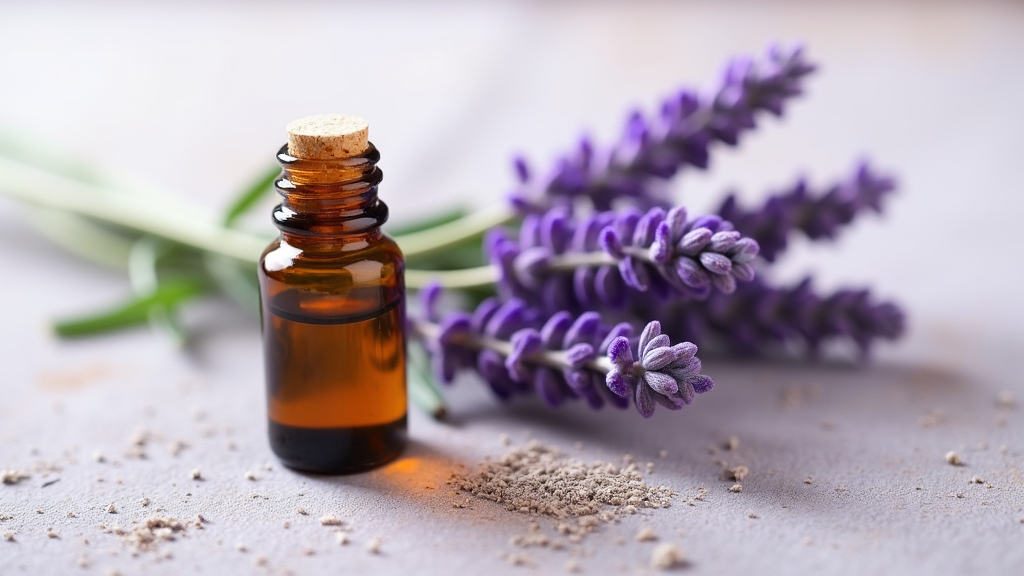Aromatherapy has always fascinated me, especially when it comes to essential oils that do more than just smell good. If you’ve ever sniffed a sprig of lavender and instantly felt a wave of calm, you’ve experienced just a taste of what this purple wonder can do. Lavender isn’t just a calming oil; it tackles so many everyday needs that it’s pretty much a first aid kit in a bottle. I’ll break down the different ways lavender oil fits into aromatherapy and show why I keep it within easy reach at all times.

Lavender in Aromatherapy: Why Everyone’s Talking About It
Lavender oil has been around forever, and for good reason. Its uses stretch from relaxation to pain support, and it fits easily into almost any setting. At home, in the car, and even at your desk, lavender is right at home. Lavender has such a long history in herbal traditions of Europe and the Middle East that it’s tough to find a wellness book or essential oil guide without a section dedicated to it.
Thanks to loads of research and centuries of use, lavender quickly became known for its all purpose benefits. Modern aromatherapists often call it the “Swiss Army knife” of oils, and after years of using it myself, I totally get why. It helps with stress, sleep, headaches, minor burns, bug bites—pretty much anything. That sort of flexibility makes it a favorite, especially when you want to keep your aromatherapy setup simple but effective.
Breaking Down Lavender’s Coolest Benefits
I started using lavender oil mostly for sleep, but over time, I realized there’s so much more to it. Lavender is famous for how it helps with relaxation, but its benefits go way beyond just winding down. Here are some standout ways I like to use lavender in everyday life:
- Supports better sleep: Just a few drops on my pillow or in a diffuser can make falling asleep way easier, especially after a long day.
- Eases everyday stress: Inhaling lavender during a midday slump or before a big meeting helps melt away tension.
- Soothes minor burns and skin irritations: I dab diluted lavender oil on little burns, bites, and scratches. It has a mild, sweet scent that doesn’t overwhelm the senses.
- Freshens up spaces: Lavender neutralizes odors in homes, cars, or gym bags, making spaces feel lighter and more inviting.
- May help with headaches: Rubbing a few diluted drops on my temples has been really helpful during those random tension headaches.
This lineup is pretty handy, but that’s just the start. Lavender is one of the rare oils that’s usually gentle enough for folks with sensitive skin when diluted properly. That gives even more flexibility for experimenting responsibly. And did you know that many people mix lavender in with their skincare products as an extra boost for calming redness or irritation? It can add a pleasant, natural scent to creams or lotions.
Here’s a link if you would like to check it out:
https://referral.doterra.me/4740777
How Lavender Works: A Quick Science Overview
Curious minds often want to know: what makes lavender so effective in aromatherapy? Its main active compounds, linalool and linalyl acetate, play a big role in giving lavender both its scent and its benefits.
Linalool is especially known for its calming properties, while linalyl acetate helps add to the pain soothing effects. Breathing in lavender can affect areas of the brain linked to mood and relaxation, which is why it feels so calming right away. Some research even suggests lavender oil may interact with neurotransmitters, although there’s still plenty to learn in this area.
The real beauty is how lavender straddles that space between being powerful and gentle at the same time. This makes it appealing for families and those who are new to essential oils. The subtle floral aroma doesn’t overpower, so it’s easier to introduce to most environments.
Getting Started: Simple Ways to Use Lavender Oil
It’s really easy to fit lavender oil into your daily routine, even if you’re brand new to aromatherapy. Here’s how I keep lavender close by throughout my day:
- Diffuser blends: Pop a few drops into a room diffuser for a calming environment. It mixes well with oils like orange, cedarwood, and frankincense if you want to switch up the vibe.
- Bedding refresher: I add a drop or two to my pillowcase before bed or mix it with water in a spray bottle for a DIY linen mist. Spritzing it on curtains or rugs lends a gentle fragrance that feels both calming and fresh.
- Topical application: For skin, I always dilute lavender in a carrier oil like coconut or jojoba. I use it on small skin flareups or tense spots on my shoulders or neck. Adding it to a warm compress can soothe tension after a long workout.
- Portable “aroma stick”: I keep a personal inhaler or cotton ball with lavender in my bag, so if tension hits when I’m out, instant calm is close by.
- In bath rituals: Mixing 3-5 drops with Epsom salts before adding to a bath makes a seriously relaxing soak. You can even combine it with oatmeal for extra skin-soothing power if your skin is feeling dry or irritated.
Getting creative is part of the fun, just make sure to dilute lavender if you’re putting it on your skin. Undiluted essential oils can be a bit too much for most people. Try adding a drop to a travel-sized bottle of unscented lotion to make your own soothing hand cream—great for taking with you wherever you go.
What To Keep In Mind Before Adding Lavender To Your Routine
Lavender oil is generally pretty safe and user friendly, especially compared to stronger oils like cinnamon or clove. But there are still some points worth thinking about if you want to use it regularly.
- Proper dilution: For adults, a good starting point is about 1-2 drops in a teaspoon of a neutral carrier oil when applying to the skin.
- Allergy concerns: Patch testing on a small skin area can help check for allergies, especially if you have sensitive skin or lots of allergies already. This is an important step if you’re new to any essential oil.
- Buying quality oil: Not all essential oils are created equal. Pure, organic, and properly labeled oils from companies that share their testing results are generally a safer bet.
- Pet safety: Be careful diffusing lavender if you have cats, dogs, or birds. Always check with your vet and keep oils out of reach of pets and kids. Remember that some animals have more sensitive respiratory systems.
- Internal use: Many experts recommend not swallowing essential oils, inhaling or topical use is generally safer.
Allergy Sensitivity & Patch Testing
Even though lavender is known for being gentle, no essential oil is totally risk free. I always suggest doing a quick patch test by applying diluted oil to a small spot on your forearm. If you don’t notice any redness or irritation within 24 hours, it usually means you’re good to go for skin use. This simple test can save you a lot of discomfort later.
Pet and Kids’ Safety
I’ve found that diffusing lavender in a large space with plenty of airflow is usually fine with older kids and most pets, but every home is different. Always use less around little kids and animals, and skip direct application on their skin unless your pediatrician or vet says it’s okay. Be especially cautious with cats, as their bodies process essential oil compounds differently than humans and dogs do.
Moving Beyond the Basics: Lavender in Advanced Aromatherapy Use
For those who get hooked on aromatherapy, lavender can be a gateway to creative blends and next level wellness routines. Here’s how I expand on basics:
Mixing with other oils: Lavender blends really well with citrus oils (like sweet orange or lemon) for daytime energy, or woodsy scents like cedarwood for deep relaxation in the evenings. Blending lets you layer effects and scents in a way that suits the moment. For those who want something comforting, pairing lavender with vanilla or chamomile creates a cozy, soothing vibe at home.
Cycling through uses: As the seasons change, I adapt my uses. In winter, I might use more lavender for dry, itchy skin or winddown showers. In summer, it’s perfect after too much sun or for a breezy pillow spray. These seasonal tweaks keep things interesting and tailored to your needs.
Personal touch: Swapping out air fresheners for lavender mists or handmade sachets brings the benefits into cars, drawers, and gym bags without artificial scents. Plus, you know exactly what’s inside. Sticking a dried lavender bundle in a closet can work miracles to keep musty odors at bay the natural way.
If you’re into DIY wellness projects, lavender is a staple ingredient in bath bombs, sugar scrubs, and homemade cleaning sprays. You can also mix it with baking soda to make a gentle carpet deodorizer or sprinkle some into potpourri bowls for natural air freshening.
Frequently Asked Questions
Beginners and regular users alike tend to have a few repeat questions about using lavender in aromatherapy. I’ll share the answers that I’ve found work for most people’s situations:
Question: Can I use lavender oil every day?
Answer: For most adults, daily inhalation or topical use (diluted!) is generally fine. If you’re pregnant, nursing, or have certain health conditions, always doublecheck with your healthcare provider.
Question: Does lavender really work for sleep?
Answer: Lots of people (including me) find it super useful for winding down. Clinical studies also support its reputation for relaxation and better sleep, though everyone is a bit different.
Question: Can lavender oil calm pets?
Answer: Some folks have seen calming effects with dogs, but always start with small amounts, make sure your vet is on board, and watch for any unusual reactions.
Wrapping Up: Making Lavender Your Aromatherapy MVP
Lavender might seem basic at first glance, but it proves itself time and time again as the ultimate multitasker in aromatherapy. From sleep struggles to daily stress and quick fixes for minor skin annoyances, it covers so much ground with just a few drops. If you’re building a wellness toolkit or want to keep your essential oil collection simple, lavender oil offers an easy win for just about anyone.
A little bit of lavender goes a long way to make any space feel calmer, cozier, and more balanced. Try it out if you haven’t already; your senses (and your stress level) will probably thank you.
